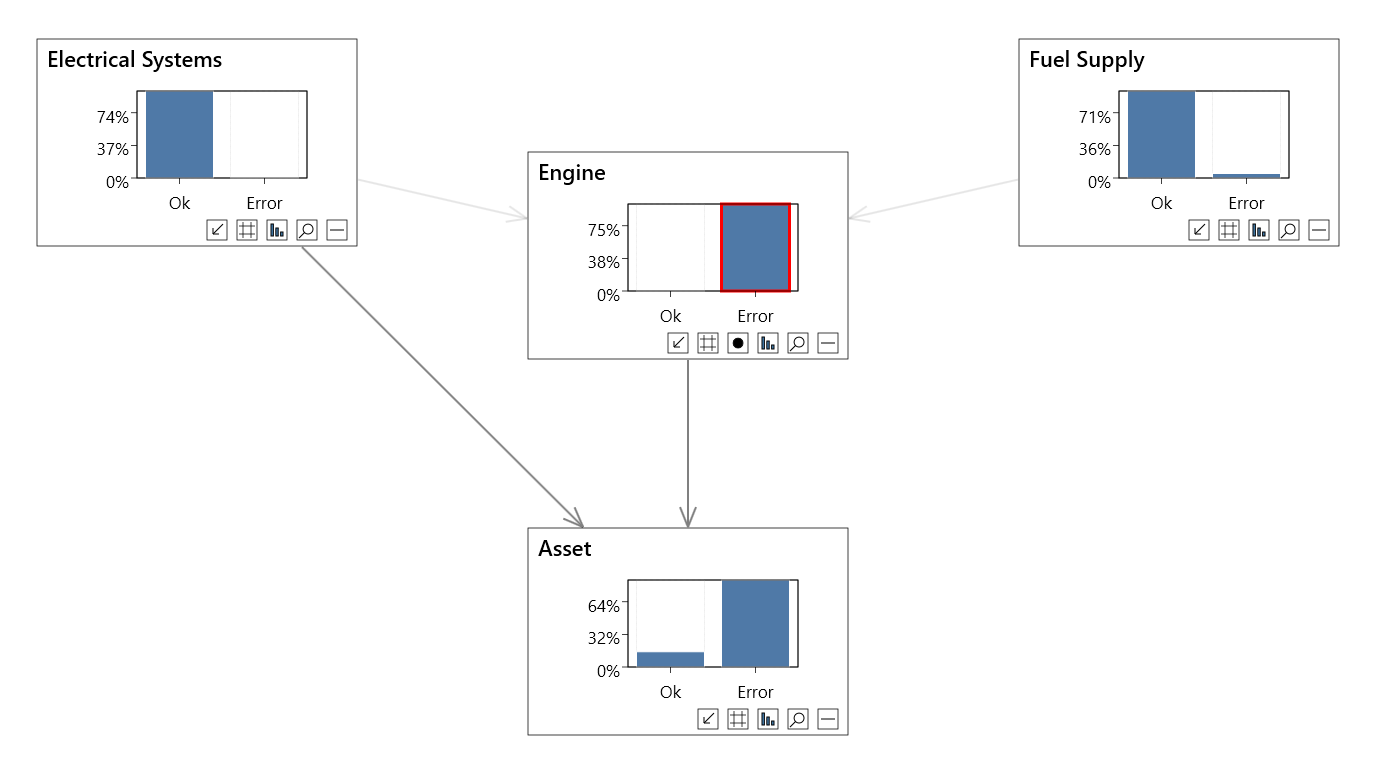Interventions
Introduction
Intervention evidence can be set on discrete variables, continuous variables, and DBN variables (discrete or continuous).
For an introduction to causal inference and causal optimization including interventions please see Introduction to causality | the science of measuring and optimizing cause & effect

Using the example in the image above, an engine failing due to either Electrical Systems failing and/or a problem with the Fuel Supply is different to someone with malicious intent directly taking the engine offline. The later in the model above is an intervention, and it changes the way parent variables of the intervention receive information.
The intervention on Engine, stops the normal flow of information up through to the parents Electrical Systems and Fuel Supply. With standard evidence, these parents would change due to information flowing back up from Engine, making both an Electrical Systems error and a Fuel Supply error more likely, however an intervention blocks this flow. This makes sense because, under this model the engine failure does not make it more likely that fuel has run out ot the Electrical Systems having failed.
Another example would be in advertising. When customers purchase, having been purposefully exposed to advertising, this can also be modeled as an intervention.
Interventions are part of Do-Calculus. The generally accepted notation for a query on A, given an intervention on B is P(A | Do(B)).
Setting an intervention
- Shift click on a node visual bar
- Open the Evidence window and edit the Intervention column
Temporal interventions
Temporal evidence can also be set in the Evidence window via the Intervention column.
Interventions in the network viewer
When an intervention is set, a red outline will help identify it.